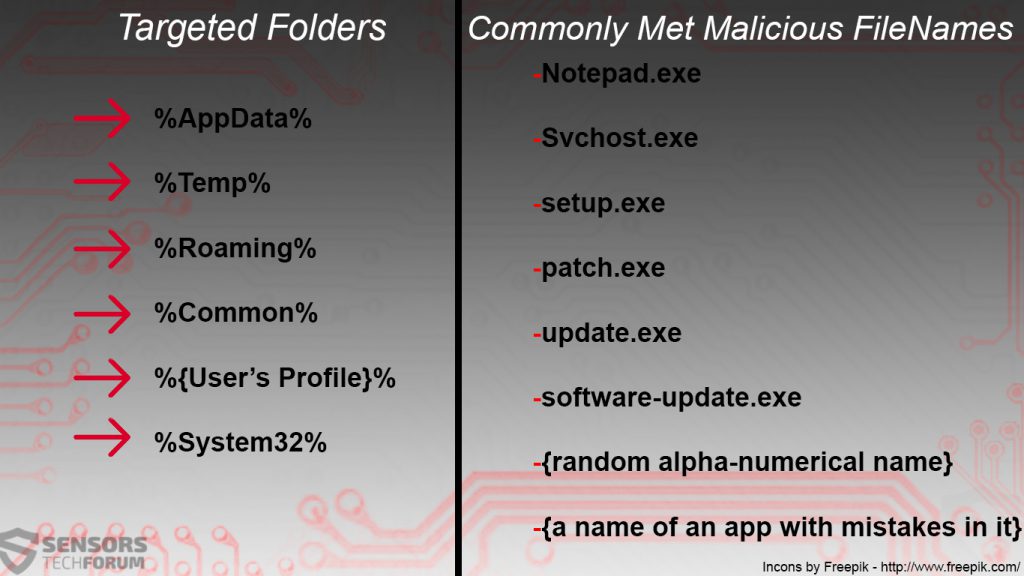 This article has the goal to show you how to remove the CrypoLook Coinhive Monero Miner malware from your computer and how to restore your CPU and GPU works back to normal state.
This article has the goal to show you how to remove the CrypoLook Coinhive Monero Miner malware from your computer and how to restore your CPU and GPU works back to normal state.
A brand new Monero mining malware, called CryptoLoot has been detected to use script from the website Coinhive in order to mine for the monero malware. The virus has unique features in that it runs an executable in the background of your computer in order to mine it for the cryptocurrency Monero. If you suspec that your computer has been infected by the CryptoLoot Coinhive Monero Miner malware, we strongly advise you to focus on reading this article in order to learn how to remove the CryptoLoot Monero miner from your computer completely.

Threat Summary
| Name | CryptoLoot |
| Type | Cryptocurrency Miner Trojan |
| Short Description | The end goal of this malware is to mine for the Cryptocurrency Monero, using your computer’s CPU and GPU resources. |
| Symptoms | Having this malware on your PC, results in elevated CPU(Central Processor) and GPU(Video Card) usage by it’s malicious process. If it remains on your computer for longer periods of time, the virus may even break your computer’s components. It may fry your CPU if it stays for longer periods of time. |
| Distribution Method | Spam Emails, Email Attachments, Executable files |
| Detection Tool |
See If Your System Has Been Affected by malware
Download
Malware Removal Tool
|
User Experience | Join Our Forum to Discuss CryptoLoot. |

CryptoLoot Monero Miner Malware – How Does It Infect
In order to infect computers, this mining malware does ot differ so much when compared to other Trojan Horses, only by the fact that it’s configured to mine. The infection may come on your PC after you have downloaded one of the following executable files:
- Fake setups.
- Patches.
- License activators for software.
- Game patches or game cracks.
- Other suspicious programs.
Other methods by which you could also become a victim of the CryptoLoot Monero miner is if you download a malicius e-mail attachment. Since most e-mails block such, cyber-crooks obfuscate the attachments in either .ZIP or .RAR archives which are also the main reason why the Coinhive Monero miner may enter your PC undetected. The attachments may fool you into thinking they are a legitimate document, like:
- Purchase receipt.
- Invoice for a product your may not have bought.
- Banking statement of your banking activity.
- Report of unauthorized login on your account on a given website.
And the messages that accompany those e-mail attachments are also deceitful in that they further aim to convince you to open the malicious attachments. One example can be seen from the image below:
Besides attached directly to the e-mail, the files spreading the CryptoLoot Monero mining malware maya also be dropped on your computer as a result of you becoming infected with other viruses, such as a Trojan.Downloader.

CryptoLoot Monero Miner Malware – Malicious Activity
No matter the method via which it happens, once you are deceived into opening the malicious file, spreading CryptoLoot, infection takes place in the background and you do not notice it. This is because the main malicious file of this virus is obfuscated and it cannot be conventionally detected by antivirus programs, especially if they are not updated with latest definitions. After infection, CryptoLoot Monero miner drops It’s malicious payload on the victim’s computer and it may be named with different names and located in the following Windows system folders:
After the payload is dropped, the CryptoLoot miner executable may be executed. It immediately connects to what Is known as mining pool. Such pools combine many computers to mine for the Monero cryptocurrency and divide the profit from generating Monero by dividing it equally among the cryptocurrency wallets of the users in the mining pool. In this case, your PC may mine for Monero cryptocurrency for a wallet of user in a pool in the Coinhive site.
The mining process works in a very particular way. The procedure includes hashes, which are complex mathematical problems and the blockchain network uses your CPU and GPU power to calculate those hashes via their calculation components. This results in hashes being generated. When a certain block size of hashes is complete, 1 Monero is generated. This takes time and this is why CryptoLoot malware aims to stay on your computer for as long as possible while remaining undetected.
Furthermore, CryptoLoot Monero miner Trojan may also perform other activities on your computer:
- Update itself to remain undetected.
- Track you keystrokes.
- Take screenshots from your computer.
- Collect the passwords which you have saved on your web browser.
- Obtain administrative permissions.
- Collect system information from your computer.

Remove CryptoLoot Monero Miner from Your PC
For the removal process of this virus, you can follow the removal instructions located down below. They aim to help you isolate this malware and then locate and remove it from your computer system. If manual instructions feel like they may take some time and you feel uncertain in following them, security experts always outline to use an advanced anti-malware software for removing CryptoLoot Monero miner and other malware. This is because automatic removal via such program is not only very fast, but also aims to protect your computer against future infections as well.
Preparation before removing CryptoLoot.
Before starting the actual removal process, we recommend that you do the following preparation steps.
- Make sure you have these instructions always open and in front of your eyes.
- Do a backup of all of your files, even if they could be damaged. You should back up your data with a cloud backup solution and insure your files against any type of loss, even from the most severe threats.
- Be patient as this could take a while.
- Scan for Malware
- Fix Registries
- Remove Virus Files
Step 1: Scan for CryptoLoot with SpyHunter Anti-Malware Tool



Step 2: Clean any registries, created by CryptoLoot on your computer.
The usually targeted registries of Windows machines are the following:
- HKEY_LOCAL_MACHINE\Software\Microsoft\Windows\CurrentVersion\Run
- HKEY_CURRENT_USER\Software\Microsoft\Windows\CurrentVersion\Run
- HKEY_LOCAL_MACHINE\Software\Microsoft\Windows\CurrentVersion\RunOnce
- HKEY_CURRENT_USER\Software\Microsoft\Windows\CurrentVersion\RunOnce
You can access them by opening the Windows registry editor and deleting any values, created by CryptoLoot there. This can happen by following the steps underneath:


 Tip: To find a virus-created value, you can right-click on it and click "Modify" to see which file it is set to run. If this is the virus file location, remove the value.
Tip: To find a virus-created value, you can right-click on it and click "Modify" to see which file it is set to run. If this is the virus file location, remove the value.Step 3: Find virus files created by CryptoLoot on your PC.
1.For Windows 8, 8.1 and 10.
For Newer Windows Operating Systems
1: On your keyboard press + R and write explorer.exe in the Run text box and then click on the Ok button.

2: Click on your PC from the quick access bar. This is usually an icon with a monitor and its name is either “My Computer”, “My PC” or “This PC” or whatever you have named it.

3: Navigate to the search box in the top-right of your PC's screen and type “fileextension:” and after which type the file extension. If you are looking for malicious executables, an example may be "fileextension:exe". After doing that, leave a space and type the file name you believe the malware has created. Here is how it may appear if your file has been found:

N.B. We recommend to wait for the green loading bar in the navigation box to fill up in case the PC is looking for the file and hasn't found it yet.
2.For Windows XP, Vista, and 7.
For Older Windows Operating Systems
In older Windows OS's the conventional approach should be the effective one:
1: Click on the Start Menu icon (usually on your bottom-left) and then choose the Search preference.

2: After the search window appears, choose More Advanced Options from the search assistant box. Another way is by clicking on All Files and Folders.

3: After that type the name of the file you are looking for and click on the Search button. This might take some time after which results will appear. If you have found the malicious file, you may copy or open its location by right-clicking on it.
Now you should be able to discover any file on Windows as long as it is on your hard drive and is not concealed via special software.
CryptoLoot FAQ
What Does CryptoLoot Trojan Do?
The CryptoLoot Trojan is a malicious computer program designed to disrupt, damage, or gain unauthorized access to a computer system. It can be used to steal sensitive data, gain control over a system, or launch other malicious activities.
Can Trojans Steal Passwords?
Yes, Trojans, like CryptoLoot, can steal passwords. These malicious programs are designed to gain access to a user's computer, spy on victims and steal sensitive information such as banking details and passwords.
Can CryptoLoot Trojan Hide Itself?
Yes, it can. A Trojan can use various techniques to mask itself, including rootkits, encryption, and obfuscation, to hide from security scanners and evade detection.
Can a Trojan be Removed by Factory Reset?
Yes, a Trojan can be removed by factory resetting your device. This is because it will restore the device to its original state, eliminating any malicious software that may have been installed. Bear in mind that there are more sophisticated Trojans that leave backdoors and reinfect even after a factory reset.
Can CryptoLoot Trojan Infect WiFi?
Yes, it is possible for a Trojan to infect WiFi networks. When a user connects to the infected network, the Trojan can spread to other connected devices and can access sensitive information on the network.
Can Trojans Be Deleted?
Yes, Trojans can be deleted. This is typically done by running a powerful anti-virus or anti-malware program that is designed to detect and remove malicious files. In some cases, manual deletion of the Trojan may also be necessary.
Can Trojans Steal Files?
Yes, Trojans can steal files if they are installed on a computer. This is done by allowing the malware author or user to gain access to the computer and then steal the files stored on it.
Which Anti-Malware Can Remove Trojans?
Anti-malware programs such as SpyHunter are capable of scanning for and removing Trojans from your computer. It is important to keep your anti-malware up to date and regularly scan your system for any malicious software.
Can Trojans Infect USB?
Yes, Trojans can infect USB devices. USB Trojans typically spread through malicious files downloaded from the internet or shared via email, allowing the hacker to gain access to a user's confidential data.
About the CryptoLoot Research
The content we publish on SensorsTechForum.com, this CryptoLoot how-to removal guide included, is the outcome of extensive research, hard work and our team’s devotion to help you remove the specific trojan problem.
How did we conduct the research on CryptoLoot?
Please note that our research is based on an independent investigation. We are in contact with independent security researchers, thanks to which we receive daily updates on the latest malware definitions, including the various types of trojans (backdoor, downloader, infostealer, ransom, etc.)
Furthermore, the research behind the CryptoLoot threat is backed with VirusTotal.
To better understand the threat posed by trojans, please refer to the following articles which provide knowledgeable details.




